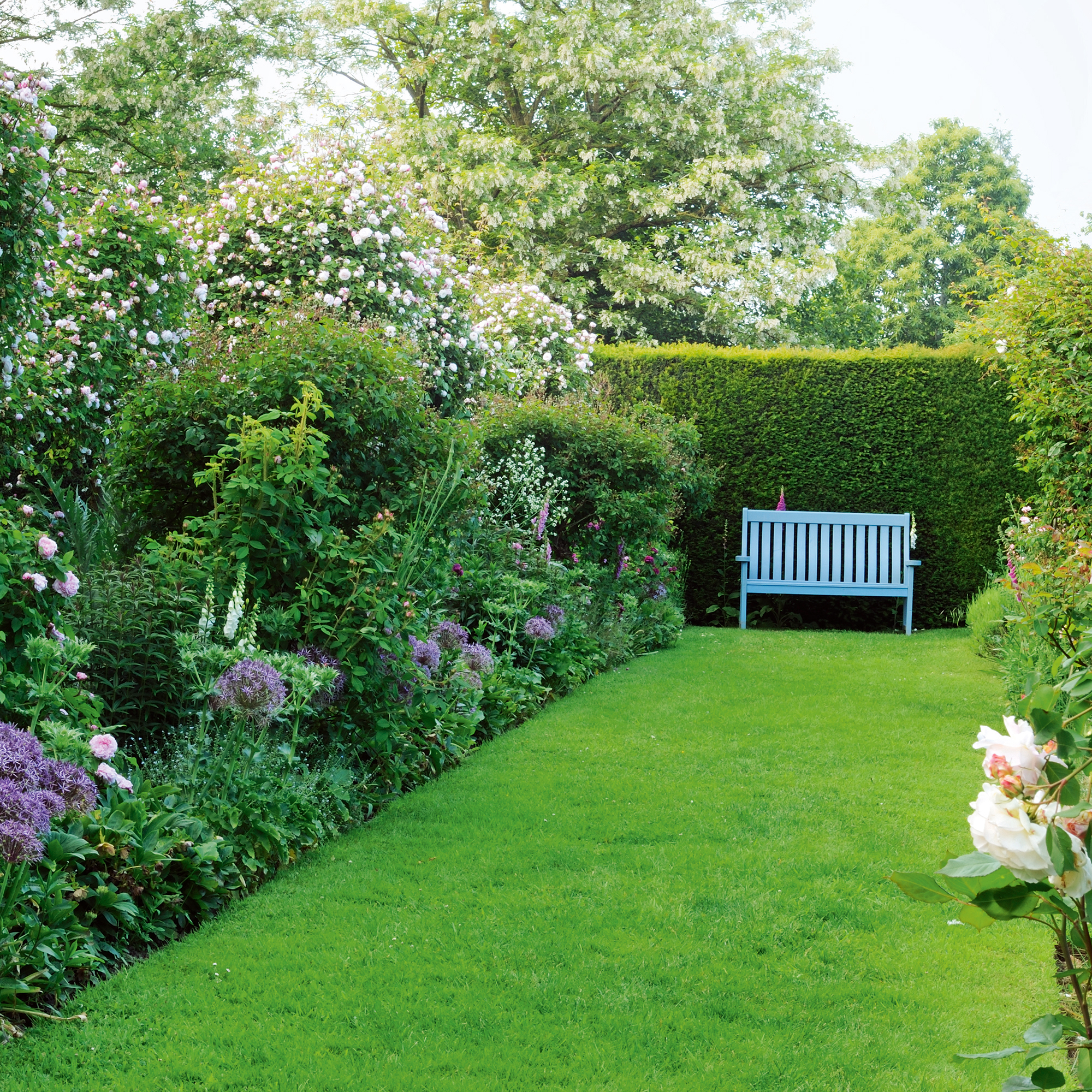
Fertilising your lawn is commonplace in spring and summer, but fertilising your lawn in autumn can also give your grass the headstart it needs for next year.
And while you’re probably wondering when to stop cutting your lawn before winter amidst these cold and wet conditions, you should also be asking yourself what the best fertiliser to use in autumn is. The wrong fertiliser could leave your grass struggling to survive through the winter months, leaving you with an even bigger job next spring.
To help you out, we’ve asked some of the best garden experts in the business to share their lawn care tips and tricks, as well as their professional advice on how to successfully feed your lawn this autumn.
What lawn fertiliser to use in autumn
‘Winter can be tough for lawns as the cold and wet weather, frost and lack of sunshine make it easier for diseases to take hold,’ explains Chris McIlroy from The Grass People. ‘Feeding your grass now can strengthen it and keep it safe from frost and diseases.’ But what you might not realise is that there are many different kinds of lawn fertiliser on the market - and it’s important to choose the right one.

In fact, the fertiliser that you should use on your grass in autumn is very different to the fertiliser that you would use on your grass in spring. That’s because your grass requires different nutrients at different times of the year - and this autumn lawn feed is perfect for the colder months.
Chris says, ‘You should look for feeds that are high in potassium and phosphate. Potassium enhances your lawn’s ability to fight environmental stresses, particularly winter diseases like Red Thread and Fusarium Patch (Snow Mould). Phosphate creates stronger grass blades and helps your lawn to maintain its lush, healthy, and vibrant green appearance.’
You also have the choice of quick-release or slow-release autumn lawn feed, but Chris suggests the latter, as ‘a slow-release fertiliser will provide longer-lasting results to keep your lawn fed up until spring.’
How to fertilise your lawn in autumn
Of course, knowing what fertiliser is best to use in autumn is only half the battle. This is everything you need to know about how to fertilise your lawn in autumn.
What you’ll need
- Autumn lawn fertiliser - like this Miracle-Gro EverGreen Autumn Lawn Care Spreader from Amazon
- Aerator - like this Costway Rolling Garden Lawn Aerator from B&Q
Step-by-step
1. Choose the right time
Chris Bonnett, founder of Gardening Express explains, ‘It’s generally best to fertilise your lawn in the early to mid-autumn. However, if you missed this window, then November is still an appropriate time to apply fertiliser. Just keep in mind to apply it before the ground freezes and goes dormant.’
You also need to consider when you last cut your grass if you want to fertilise your lawn for autumn and winter. And if you’ve already cut your grass for the last time this year, don’t worry. Chris from The Grass People says, ‘Avoid applying fertiliser until at least 24 hours after you last cut your grass, but it is fine to cut once the fertiliser has settled in.’

2. Aerate the ground
Although this next step isn’t essential, many gardening experts suggest aerating your lawn before applying fertiliser. This is a fairly easy process and something that won’t take long at all to do.
Matt Kent, Landscape Category Manager at Toolstation, suggests, ‘Aerate the soil using a garden fork to create holes up to 6 inches deep. This helps to relieve soil compaction to improve surface drainage as well as allow grass roots to grow deeper and stronger.'
3. Remove weeds
Matt also encourages anyone looking for a healthy lawn next spring to spend a little time removing the weeds from their grass before applying the fertiliser, too. ‘Make sure to check over your grass and remove any weeds by hand so they don’t absorb your lawn’s nutrients,’ he explains.

4. Apply fertiliser
This process will depend on the fertiliser you choose, as this autumn variety can come in various different forms - including granules you can scatter and a liquid feed you can spray. Because of this, it’s best to follow the instructions of the specific fertiliser you buy to complete this step.
However, Chris from The Grass People has also issued a warning to those fertilising their grass this autumn. ‘Pets and children should stay off the lawn during the application process until the fertiliser granules have dissolved and disappeared from your lawn's surface. If you are using a liquid fertiliser, allow 24 hours to pass before granting pets and children access again.’
5. Water the grass
When you’ve applied the fertiliser, you should then water the grass. Of course, this might not be necessary if the ground is already fairly wet or if rain is on the horizon. This is a call that you’ll need to make by yourself, as the water will help to break down the fertiliser and allow for better absorption. So, it's down to you to decide whether you need to add some more water into the mix or not.

FAQs
What is the best fertiliser for lawns in autumn?
When searching for lawn fertiliser in autumn, look out for brands that offer specific autumn feeds. These fertilisers are normally made with different ingredients to protect your lawn during the wetter and colder months and to give it the best headstart for spring.
These fertilisers should be high in potassium and phosphate, as these two ingredients will not only help your grass fight off diseases, but they will also help your grass to stay and look healthy over the next few months.
Is it too late to put autumn feed on lawn?
It’s possible to put autumn feed on your lawn up to the first frost of the year. Usually, this occurs in November - but with ever-changing weather patterns, it’s hard to tell exactly when that will be.
So, until we experience the first frost of the year, it’s not too late to fertilise your lawn for autumn.
What is the difference between summer and autumn lawn feed?
The main difference between these two lawn feeds is the included ingredients. Of course, the bulk of these fertilisers are the same, but summer lawn feed should also include nitrogen to encourage growth on the top layer of the grass.
On the other hand, autumn lawn feed contains potassium and phosphate, which will help your grass ward off diseases during the winter months and toughen up the roots so that it can continue to thrive well into the spring months.
If you stick to these rules, your grass will look greener than ever next spring.







